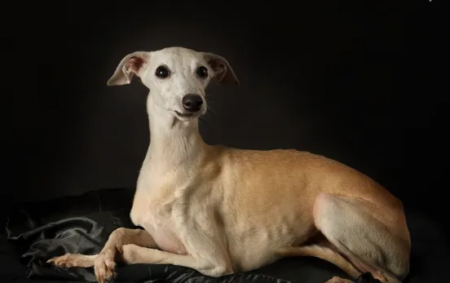Discover Can Italian Greyhounds Be Left Alone? Learn tips to ensure their well-being when you’re away. Understand their independence level. The Italian Greyhound, also known as the Little Italian Greyhound , is one of the most sought after dog breeds by small dog lovers . In effect, it is the miniature variant of the greyhound. But don’t let its small size fool you, because the Italian greyhound is just as agile as its ‘older brothers’, in addition, it has the same sensitive and extremely affectionate character, making it a true gem as a pet, whether in an apartment in the city or in a house in the country.
Can Italian Greyhounds Be Left Alone?

Italian Greyhounds, like any other breed, have varying levels of independence. Some dogs may be perfectly content being left alone for a few hours, while others may experience separation anxiety and become distressed. It is important to assess your individual dog’s temperament and needs before making any assumptions.
Characteristics of the Italian Greyhound.
Italian greyhounds are small, delicate dogs compared to other types of greyhounds. His body structure is slender and athletic, with well-defined muscles. They have an elongated and thin cone-shaped head. The skull is slightly domed and tapers towards the nose.
The eyes are large and expressive, often almond-shaped, and may be blue . Their ears are small and thin, and are generally kept folded back when at rest. The tail is long and thin, tapering towards the tip. Likewise, the hair is short, fine and soft to the touch, and only three colors are allowed. As a curiosity, the Italian greyhound is also a hypoallergenic dog .
The physical characteristics of the Italian greyhound are the following:
- Its weight ranges between 4 and 5 kilos .
- It has a height at the withers of between 32 and 38 centimeters, its body is slender and compact , its head is elongated as well as its snout.
- His eyes are large and dark . They don’t stand out too much because they neither protrude nor are sunken.
- Their ears are small , set high and with a right-angled bend.
- The tail is thin and narrow towards the tip.
- The Italian greyhound stands out for having soft, short and shiny hair . It can be black, slate gray or Elizabethan yellow. There may also be white tones on the chest and extremities.
- Italian greyhounds are submissive, friendly, pleasant and affectionate . They really enjoy running, jumping, skipping and climbing. They are very sensitive dogs, so they require a lot of attention. At unCOMO we recommend that you do not yell at him and rely on positive reinforcement so that he does not get stressed.
- He feels great love for his owners and follows them everywhere. You have to be careful not to step on him because he will usually be on your heels. Having fragile bones, especially as a puppy, it is advisable to take extreme precautions.
- They require a lot of attention and affection . If they do not have it, they can become depressed and exhibit aggressive behavior. Also, if he doesn’t feel loved enough, he might start relieving himself inside the home to get attention. In this article we teach you How to treat separation anxiety in dogs .
Origin of the Italian greyhound
Despite its name, the origin of the Italian greyhound or greyhound dates back to Ancient Egypt when, more than 6,000 years ago, mummified remains of this breed were found in the tombs of the pharaohs.
Some time later, it was the Phoenicians who brought this breed of dog to the rest of Europe and, especially Italy, where its current name comes from.
During the Renaissance it was when it became popular among the high echelons of the Italian nobility for being considered a model of grace and distinction. In fact, it is common to see these friendly dogs represented in some of the great works of Renaissance painting.
In addition to being one of the favorite pets of the nobility, it also enjoyed great popularity as a hunting dog, a function that disappeared over time to be replaced by that of a companion animal.
Types of Italian greyhound
Although there may be differences in the physical appearance of Italian Greyhounds , there are no types that are differentiated as such and that meet common patterns.
Colors
The tones by which the Italian greyhound is characterized are usually brownish, grayish or black and, sometimes, they can be combined with each other.
hair types
The hair of Italian greyhounds is usually short and shiny and very soft to the touch.
Conclusion
While Italian Greyhounds can be left alone, it is essential to consider their individual temperament, training, and needs. By following the tips mentioned in this article and assessing your dog’s specific requirements, you can ensure their well-being and happiness when you are away. Remember, every dog is unique, and it is important to provide them with the care and attention they need to thrive.
